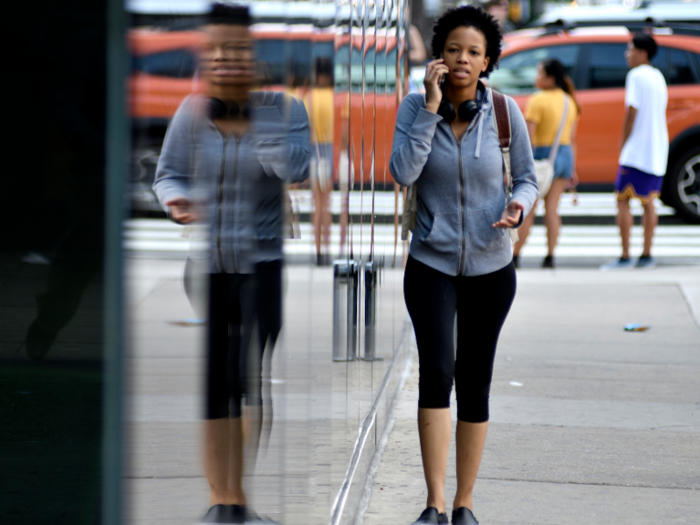- Home
- slideshows
- miscellaneous
- 6 facts that show the dire state of America's middle class
6 facts that show the dire state of America's middle class
Nearly half of Americans earning $100,000 or more think they're middle class.

One-third of millennials earning at least $100,000 a year consider themselves middle class.

About 38% of millennials earning $100,000 a year or more think they're middle class, according to the survey.
Of the respondents who answered the question, less than half who earn $100,000 or more consider themselves rich — about 23% of them think they're upper middle class, and nearly 6% think they're affluent. About a quarter of those earning $100,000 a year or more consider themselves below middle class — nearly 7% think they're poor, and almost 20% think they're working class.
The middle class is particularly "squeezing" millennials out, reported Richard Partington for The Guardian, citing the Organisation for Economic Co-operation and Development (OECD).
In the current economy, a six-figure salary may no longer be what it once was. While millennials have benefited from a 67% rise in wages since 1970, according to research by Student Loan Hero, this increase hasn't kept up with inflating living costs: Rent, home prices, and college tuition have all increased faster than incomes in the US.
Less than half of city-dwellers consider themselves middle class.

Only 37% of city-dwellers consider themselves middle class or upper middle class; more than half consider themselves poor or working class. In contrast, more than half of those living in suburban areas think they're middle class or upper middle class — around 14% said they're poor and roughly 27% said they're working class.
City dwellers are younger and earn less, and are more likely to have student loans. City lifestyle also creates tighter budgets because of a high cost of living. A big cost of living increase has hit America's middle class particularly hard in cities like Sacramento and Houston, according to GoBankingRates.
Urban residents may also be more inclined to feel they're not part of the middle class because many don't own a home — nearly half are renters, compared to a little more than a quarter of suburban residents, according to the survey.
More than half of Americans who grew up rich don't think they're wealthy anymore.

Of those who responded, around 36% who said they grew up affluent think they're still affluent today. Nearly 60% of those who grew up affluent now consider themselves to be in a lower class — about half of this group said they're middle class or upper middle class, while the other half said they're poor or working class.
But it's not just those born into wealth who now identify with a lower class than their upbringing — a good chunk of respondents who grew up in middle class tiers do as well.
Nearly 60% of those with an upper middle class upbringing now identify with a lower class — half of this group think they're middle class, while the remaining half think they're poor or working class. And while half of those who grew up middle class think they're still middle class today, more than one-third identify with a lower class — only around 12% think they're now part of a higher class.
The middle class is behind on homeownership and retirement savings.

The middle class has more non-mortgage debt than upper classes. About 62% of the middle class has credit-card debt, compared with roughly half of the affluent. The middle class also has more student-loan debt — nearly half have student loans, compared with 39% of the affluent. Of those that have taken out student loans, more of the middle class than the affluent are still working on paying them off.
Having more student-loan and credit-card debt to pay off makes it harder to save — which may place homeownership further away for the middle class, more of whom are still renting compared to the affluent.
It may also be why the middle class isn't as well-prepared for retirement as the affluent — more of whom expect to retire at an earlier age than the middle class. That might be because more are saving for retirement — 80% of the affluent respondents have a retirement account versus 63% of the middle class.
The middle class is most likely to save an extra $1,000.

When asked how respondents would spend a hypothetical $1,000, the self-identified poor and working class respondents were most likely to choose to pay off debt; the middle-class respondents were most likely to choose to save; and the affluent respondents were most likely to choose to invest.
The self-identified middle-class respondents' desire to save reflects the findings of previous studies, according to Business Insider's Tanza Loudenback. An earlier report from the Urban Institute found that one-third of middle-class Americans, defined as a family of three earning between $40,840 and $81,680, felt financially insecure in the last year.
Popular Right Now
Popular Keywords
Advertisement